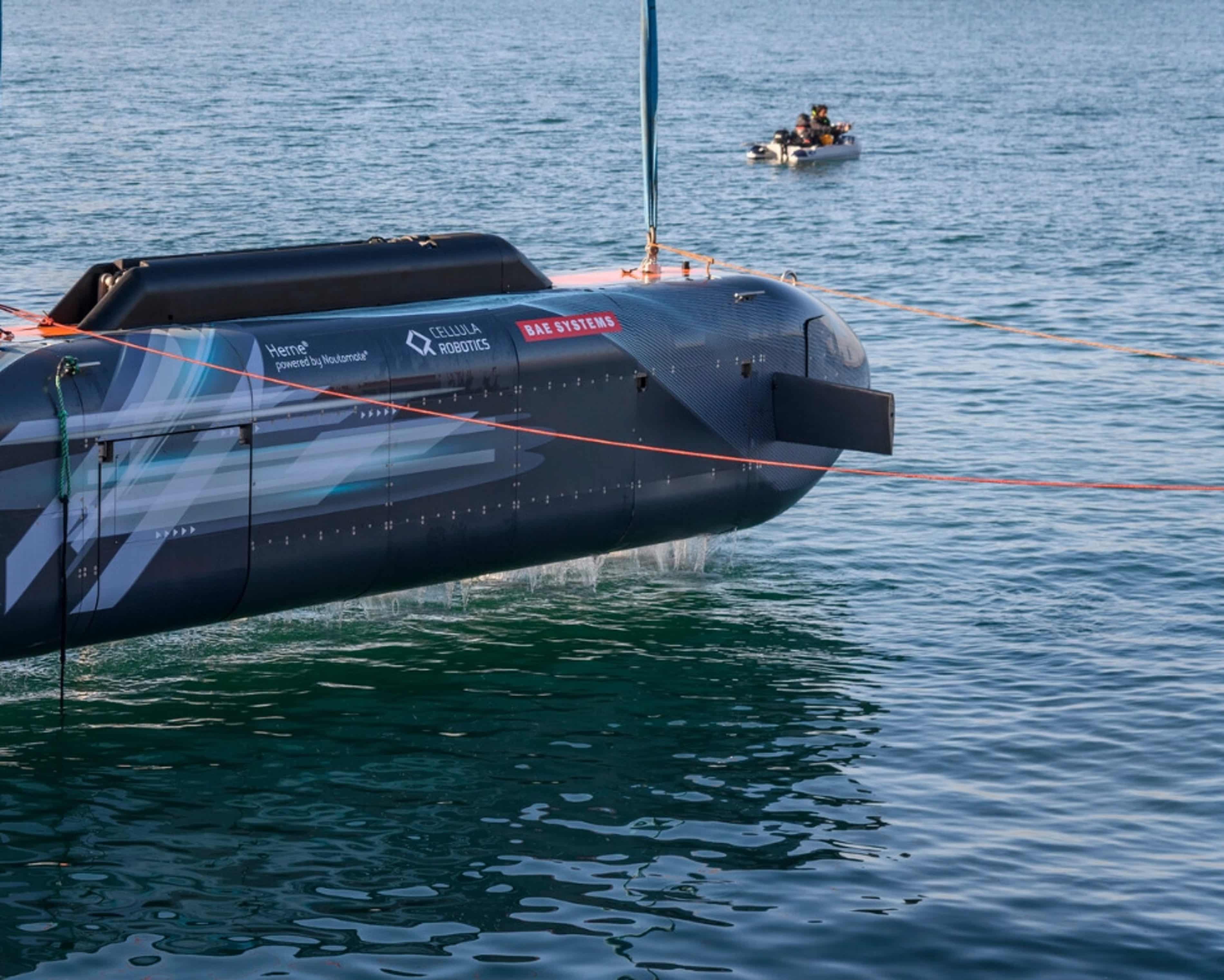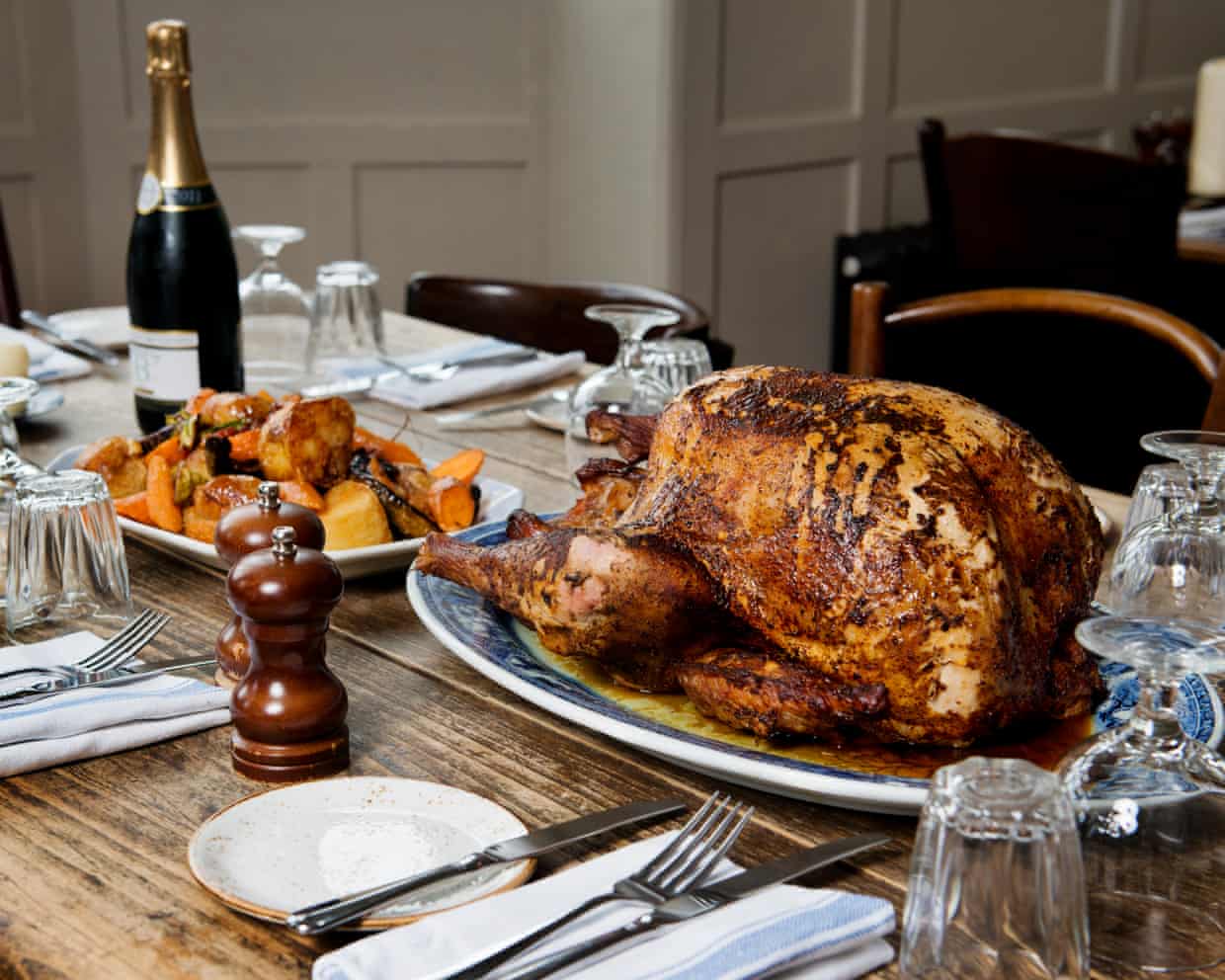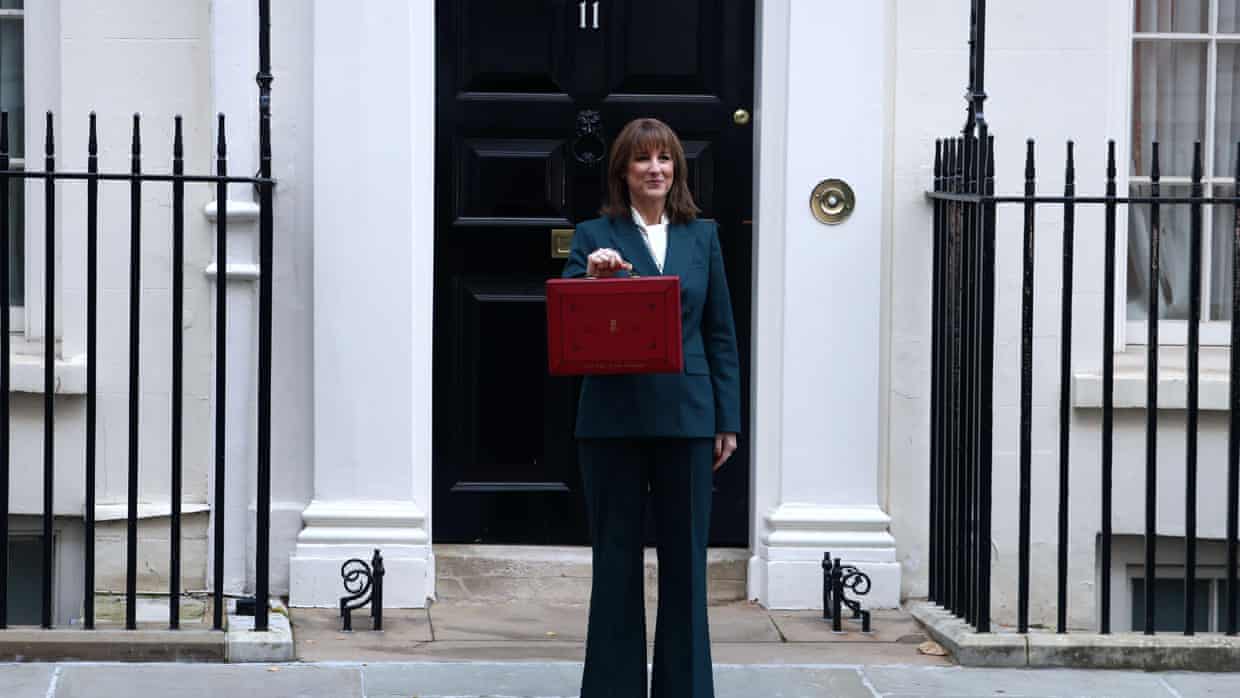‘A step-change’: tech firms battle for undersea dominance with submarine drones

Flying drones used during the Ukraine war have changed land battle tactics for ever.Now the same thing appears to be happening under the sea.Navies around the world are racing to add autonomous submarines.The UK’s Royal Navy is planning a fleet of underwater uncrewed vehicles (UUVs) which will, for the first time, take a leading role in tracking submarines and protecting undersea cables and pipelines.Australia has committed to spending $1.
7bn (£1.3bn) on “Ghost Shark” submarines to counter Chinese submarines.The huge US Navy is spending billions on several UUV projects, including one already in use that can be launched from nuclear submarines.Autonomous uncrewed submarines represent “a genuine step-change in the underwater battle space”, said Scott Jamieson, the managing director for maritime and land defence solutions at BAE Systems, Britain’s dominant weapons company and builder of its nuclear submarines.The new drones under development would allow navies to “scale up in ways that just weren’t available before”, at “a fraction of the cost of manned submarines”, he said.
The opportunity of a huge new market is pitting big, experienced defence companies, including BAE Systems and the US’s General Dynamics and Boeing against weapons tech startups such as the American firm Anduril – the maker of the Ghost Shark – and Germany’s Helsing.The startups claim they can move faster and cheaper.The struggle for undersea dominance has been almost constant in peacetime and war for most of the last century.The first nuclear-powered submarine (the US’s Nautilus, named after Jules Verne’s fictional vessel) was launched in 1954, and nuclear-armed vessels are now the centrepiece of the armed forces of six countries – the US, Russia, the UK, France, China and India – while North Korea may have recently become a seventh.That is despite deep controversy over whether the weapons represent value for huge sums of money, and whether such a destructive arsenal truly acts as a useful deterrent.
Those armed forces are playing a constant game of hide and seek on the oceans,In order to avoid detection, the submarines rarely surface: maintenance problems on other vessels recently forced some British submariners to spend a record nine months underwater, carrying Trident nuclear missiles that are theoretically ready to strike at any time,Tracking Russia’s underwater nuclear arsenal – which has become quieter in recent years – is a key focus of the Royal Navy, particularly focusing on the Greenland-Iceland-UK (GIUK) gap, a “chokepoint” that allows Nato allies to monitor Russian movements in the north Atlantic,A weapons executive said the South China Sea was another promising market, as China and its neighbours face off in a tense, long-running territorial dispute,Underwater drones offer the promise of making it easier to track rivals’ submarines.
Some sensors are designed to be dropped by other UUVs to lurk on the seabed for months at a time, according to an executive hoping to sell to the UK.The second spur has been the increasing number of apparent attacks on oil and gas pipelines, such as the Nord Stream attack in 2022, for which Germany has identified a Ukrainian suspect, and damage in 2023 to the Balticconnector pipeline between Finland and Estonia.Undersea power and internet cables are also crucial to the global economy.An underwater power cable between Finland and Estonia was hit last Christmas, two months after two telecommunications cables in Swedish waters in the Baltic Sea were cut.The UK government last week accused Russia’s Yantar surveillance ship of entering British waters to map undersea cables.
It said the UK had seen a 30% increase in Russian vessels threatening UK waters in the past two years.Parliament’s defence select committee has raised concerns over the UK’s vulnerability to undersea sabotage, known as “grey zone” actions that can cause big disruption but are likely to fall short of acts of war.Damage to the 60 undersea data and energy cables around the British Isles “could have devastating consequences for the UK”, the committee said.Andy Thomis, the chief executive of Cohort, a British manufacturer of military technology including sonar sensors, said the crewed ships, planes and submarines used up to now to track nuclear-armed subs or sabotage vessels were “very, very capable and very, very expensive”.But, he said, “by combining those with uncrewed vessels, you get the decision-making abilities that humans can give you without putting them in very dangerous proximity”.
Cohort hopes that some of its towed sensors (named Krait, after a sea snake) could be used on smaller autonomous vessels.The newest vessels contain as many as five times more sonar sensors than submarines in service.Lower power requirements are particularly important for smaller, uncrewed vessels, which do not have the luxury of a nuclear reactor on board.Passive sensors – which do not send out a sonar “ping” – make it harder to detect and destroy.The Royal Navy, and the armed forces in general, are not known for getting the latest technology into action quickly.
However, Ukraine’s forces have learned that speed and low cost are crucial when it comes to building drones for the air and the sea.For the undersea drones, the Ministry of Defence is trying to learn that lesson, asking for rapid development of tech demonstrators under “Project Cabot”.Sign up to Business TodayGet set for the working day – we'll point you to all the business news and analysis you need every morningafter newsletter promotionBAE has already tested a possible contender, called Herne.Helsing has recently opened a facility in Plymouth, where the Royal Navy also has a base, to produce underwater drones.Anduril, which is run by the Donald Trump fundraiser Palmer Luckey, is eyeing up UK manufacturing sites.
The initial contract awards are expected this year, followed by testing, likely to be in north-west Scotland by the defence company QinetiQ, and a full-scale order for one or two companies, named Atlantic Net, to fill the GIUK gap with sensors,The Royal Navy has described the project as “anti-submarine warfare as a service”, riffing on the much more common “software as a service”, according to a £24m tender notice published in May,Sidharth Kaushal, a senior research fellow on sea power at the Royal United Services Institute thinktank, said the submarine-hunting strategy of recent decades “doesn’t scale in a conflict” because it required an expensive mix of big “exquisite assets”,Warships tow cables more than 100 metres long containing arrays of sonar sensors to try to pick up the faintest and lowest-frequency sounds,Planes such as the UK’s Boeing P-8 fleet drop disposable sonobuoys to detect submarines through the depths of the sea, satellites scour the surface for signs of wake left by a submarine communications mast, and a scattering of hunter-killer submarines patrol beneath the waves.
The idea of cheap drones taking on a chunk of this work is attractive.Yet Kaushal warned that the price advantage “remains to be seen”.Industry figures warn that a big fleet of UUVs would still come with significant maintenance costs.For protecting undersea cables, too, it could be a double-edged sword: sabotage will be cheaper and easier as well.The prospect of drones firing on one another underwater is “absolutely realistic”, one executive said.
The Ministry of Defence described it as “contractor owned, contractor operated, naval oversight” – meaning that privately owned vessels will be charged with anti-submarine warfare for the first time, potentially making them military targets,“The first thing the Russians will do is go out and test this, and push it,” said Ian McFarlane, the sales director for underwater systems at Thales UK, which already supplies the Royal Navy with sonar arrays towed by submarine-hunting ships, uncrewed surface boats and flying drones and hopes to play a part in Cabot, integrating that data,However, the attraction of getting companies on board, McFarlane said, was that the Royal Navy and its allies were looking for “mass and persistence now” to counteract “an aggressor who is ramping up”,This article was amended on 28 November 2025,An earlier version said Helsing was building a facility in Portsmouth; however, the factory is located in Plymouth and has recently opened.

Yes, there are reasons to be cynical about Thanksgiving. But there’s also turkey …
It’s easy to be cynical about Thanksgiving. The origin story that we’re all told – of a friendly exchange of food between the pilgrims and the Native Americans – is, at best, a whitewashed oversimplification. And then there’s Black Friday, an event that has hijacked one of our few non-commercialised holidays and used it as the impetus for a stressful, shameless, consumerist frenzy.The Guardian’s journalism is independent. We will earn a commission if you buy something through an affiliate link

Wine magnums aren’t just for Christmas – or even champagne
There are many reasons you may want to buy a magnum, and those reasons multiply and proliferate around this time of the year. Your usual night in with your partner becomes a party for six. Dinner with the family becomes an enormous pre-Christmas do, with thirsty adults and kids in the way everywhere. And watering the masses can get expensive, not to mention cumbersome.The Guardian’s journalism is independent

Danish delight: Tim Anderson’s cherry marzipan kringle recipe for Thanksgiving
Kringles are a kind of pastry that’s synonymous with my home town of Racine, Wisconsin. Originally introduced by Danish immigrants in the late 19th century, they’re essentially a big ring of flaky Viennese pastry filled with fruit or nuts, then iced and served in little slices. Even bad kringles are pretty delicious, and when out-of-towners try them for the first time, their reaction is usually: ”Where has this been all my life?”We eat kringles year-round, but I mainly associate them with fall, perhaps because of their common autumnal fillings such as apple or cranberry, or perhaps because of the sense of hygge they provide. I also associate kringles with Thanksgiving – and with uncles. And I don’t think it’s just me; Racine’s biggest kringle baker, O&H Danish Bakery, operates a cafe/shop called “Danish Uncle”

How to turn the dregs of a jar of Marmite into a brilliant glaze for roast potatoes – recipe | Waste not
I never peel a roastie, because boiling potatoes with their skins on, then cracking them open, gives you the best of both worlds: fluffy insides and golden, craggy edges. Especially when you finish roasting them in a glaze made with butter (or, even better, saved chicken, pork, beef or goose fat) and the last scrapings from a Marmite jar.I’ve always been fanatical about Marmite, so much so that I refuse to waste a single scoop. I used to wrestle with a butter knife, scraping endlessly at the jar’s sticky bottom, until I learned that there’s a reason the rounded pot has a small flat spot on each side. When you get close to the end of the jar, store the pot on its side, so the last of that black gold inside pools neatly into the side for easy removal

What’s the secret to great chocolate mousse? | Kitchen aide
I always order chocolate mousse in restaurants, but it never turns out quite right when I make it at home. Help! Daniel, by email“Chocolate mousse defies physics,” says Nicola Lamb, author of Sift and the Kitchen Projects newsletter. “It’s got all the flavour of your favourite chocolate, but with an aerated, dissolving texture, which is sort of extraordinary.” The first thing you’ve got to ask yourself, then, is what kind of mousse are you after: “Some people’s dream is rich and dense, while for others it’s light and airy,” Lamb says, which is probably why there are so many ways you can make it.That said, in most cases you’re usually dealing with some form of melted chocolate folded into whipped eggs (whites, yolks or both), followed by lightly whipped cream

The small plates that stole dinner: how snacks conquered Britain’s restaurants
It’s love at first bite for diners. From cheese puffs to tuna eclairs, chefs are putting some of their best ideas on the snack menuElliot’s in east London has many hip credentials: the blond-wood colour scheme, the off-sale natural wine bottles, LCD Soundsystem and David Byrne playing at just the right decibel. The menu also features the right buzzwords, such as “small plates” and “wood grill”.But first comes “snacks”. There are classics: focaccia, olives, anchovies on toast

‘We had six MPs and four factions’: inside Your Party’s toxic power struggles

Peter Mandelson’s lobbying firm hired by company linked to Chinese military

Starmer says budget did not break manifesto tax pledge – as it happened

‘Unelected power’ of ultra-rich is reshaping British politics, report claims

Keir Starmer says Labour ‘kept to our manifesto’ over budget tax rises

Is Farage right to claim that racism allegations are response to a dislike of his politics?